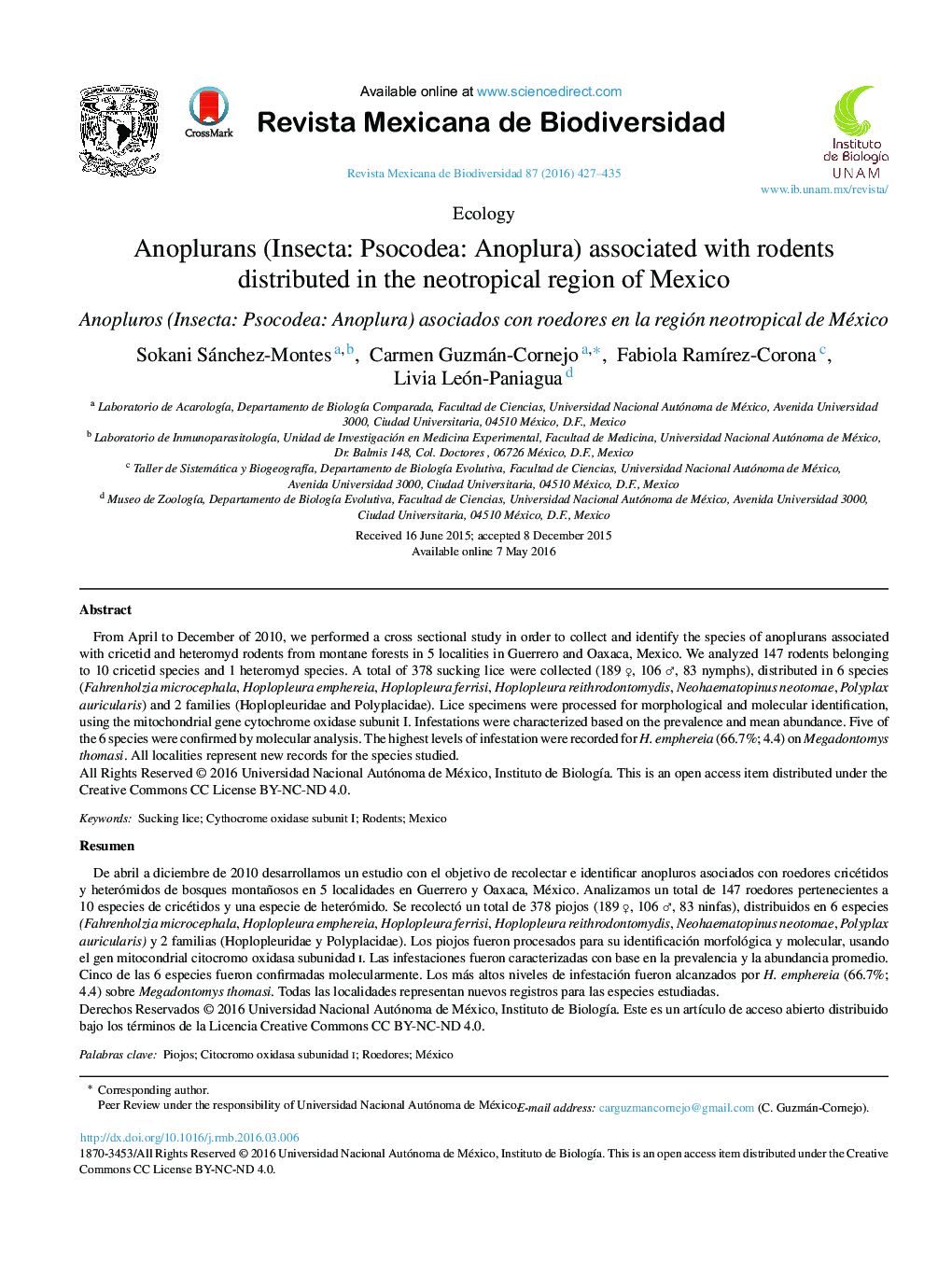| کد مقاله | کد نشریه | سال انتشار | مقاله انگلیسی | نسخه تمام متن |
|---|---|---|---|---|
| 4461264 | 1313390 | 2016 | 9 صفحه PDF | دانلود رایگان |

From April to December of 2010, we performed a cross sectional study in order to collect and identify the species of anoplurans associated with cricetid and heteromyd rodents from montane forests in 5 localities in Guerrero and Oaxaca, Mexico. We analyzed 147 rodents belonging to 10 cricetid species and 1 heteromyd species. A total of 378 sucking lice were collected (189 ♀, 106 ♂, 83 nymphs), distributed in 6 species (Fahrenholzia microcephala, Hoplopleura emphereia, Hoplopleura ferrisi, Hoplopleura reithrodontomydis, Neohaematopinus neotomae, Polyplax auricularis) and 2 families (Hoplopleuridae and Polyplacidae). Lice specimens were processed for morphological and molecular identification, using the mitochondrial gene cytochrome oxidase subunit I. Infestations were characterized based on the prevalence and mean abundance. Five of the 6 species were confirmed by molecular analysis. The highest levels of infestation were recorded for H. emphereia (66.7%; 4.4) on Megadontomys thomasi. All localities represent new records for the species studied.
ResumenDe abril a diciembre de 2010 desarrollamos un estudio con el objetivo de recolectar e identificar anopluros asociados con roedores cricétidos y heterómidos de bosques montañosos en 5 localidades en Guerrero y Oaxaca, México. Analizamos un total de 147 roedores pertenecientes a 10 especies de cricétidos y una especie de heterómido. Se recolectó un total de 378 piojos (189 ♀, 106 ♂, 83 ninfas), distribuidos en 6 especies (Fahrenholzia microcephala, Hoplopleura emphereia, Hoplopleura ferrisi, Hoplopleura reithrodontomydis, Neohaematopinus neotomae, Polyplax auricularis) y 2 familias (Hoplopleuridae y Polyplacidae). Los piojos fueron procesados para su identificación morfológica y molecular, usando el gen mitocondrial citocromo oxidasa subunidad i. Las infestaciones fueron caracterizadas con base en la prevalencia y la abundancia promedio. Cinco de las 6 especies fueron confirmadas molecularmente. Los más altos niveles de infestación fueron alcanzados por H. emphereia (66.7%; 4.4) sobre Megadontomys thomasi. Todas las localidades representan nuevos registros para las especies estudiadas.
Journal: Revista Mexicana de Biodiversidad - Volume 87, Issue 2, June 2016, Pages 427–435